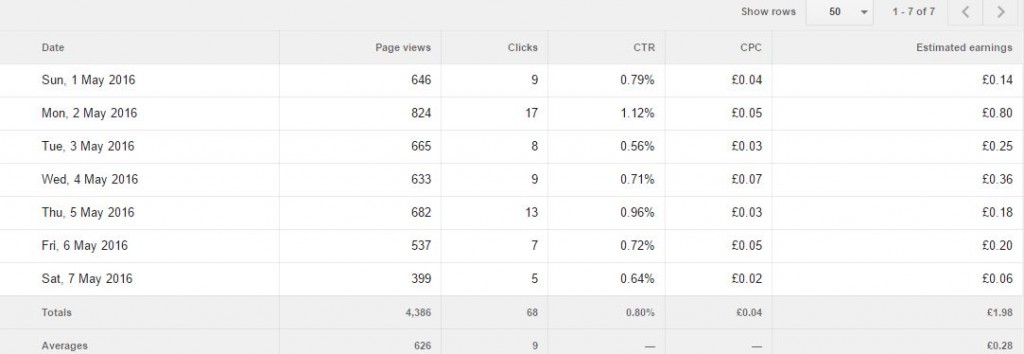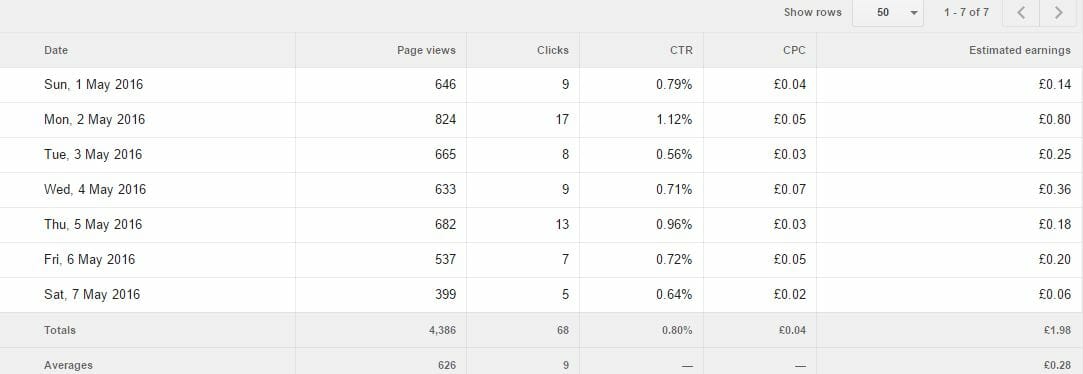As a website owner who uses Adsense, it is critical to the website to make sure the whole Adsense advertising channel is completely optimized to bring in as much revenue as possible without being too intrusive to the website’s design. With one of my new websites I have created (I will keep it unnamed as it is still in the early on stage of it’s life), I noticed something about my Adsense home page. No longer are the days that Adsense displays the CTR of your adverts – instead, Adsense used a new statistic: the RPM. This is the revenue generated per 1,000 impressions, which seems great. However, after using Performance Reports to find out my my CTR and CPC, this is what I found:
However, the main problem is the CPC, which is awfully low – comparable to the likes of the cost per click achieved from a publisher using Infolinks (and that is saying something)! For this reason, I am most likely going to look to ways to increase the CPC as this will directly affect the RPM my starter website will achieve too.
Is the RPM a Critical Statistic in Google Adsense?
Moving back to the main point of this article, Google Adsense seems to adopt the RPM as the main statistic you should stick to for your website, such that it is the statistic that tells you how successful your website is. I can understand this to some extent. But, to others, I cannot. Here are my thoughts on this.
+ RPM Takes Into Consideration Engagement
With pay per click advertising constantly being innovated upon, it is no surprise that there are now adverts that don’t even require a click to get a conversion. Such adverts merely require the web user to hover over the advert, which will trigger the advert to expand, show video, trigger an animation etc. right on the page the advert was displayed on – no loading new pages and no need for clicks.
With this in mind, the CPC and CTR mean nothing for these new engaging adverts – the RPM is the best statistic to accurately measure how successful these adverts are in getting web users to engage.
– RPM is Completely Misleading
At the same time, the vast majority of adverts in PPC still work by getting clicks. For this reason, the RPM does not clearly illustrate what the CTR and CPC is of your website – just the revenue it produces per 1,000 impressions. This causes problems, like what I have encountered above, where you may find that your CTR is extremely healthy but your CPC is terribly low or vice versa. Therefore, is it a statistic you should take note of? It is a good statistic to give you an overall picture of your website’s performance – nothing more and nothing less. If you want to go into detail about parts of your Adsense account, then the RPM is as useless as a statistic can be.



